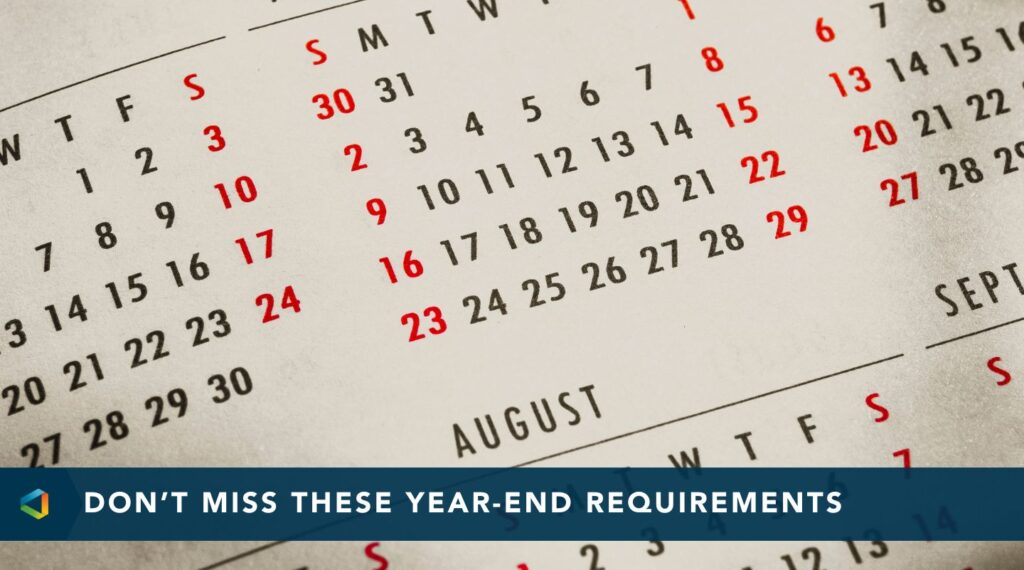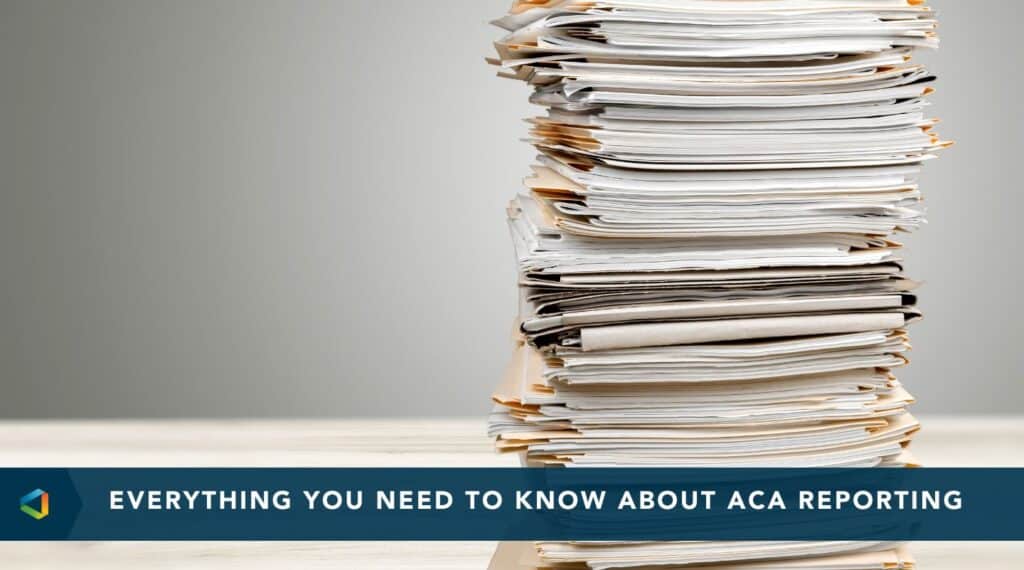Better Benefits, Lower Costs
The IRS Issues Guidance on SECURE 2.0 Provisions for 2024
The IRS Issues Guidance on SECURE 2.0 Provisions for 2024
The IRS was certainly in a giving spirit this year, issuing guidance to retirement plan sponsors just before many employers were getting ready to take time off for the holidays.
Specifically, on the day before Thanksgiving November 27th, the IRS issued guidance on new regulations that went into effect on January 1st, 2024, regarding the treatment of long-term, part-time employees. Under the original SECURE Act, 401(k) plans were prohibited from barring employees with at least 500 service hours over three consecutive 12-month periods. Because the SECURE Act limited eligible service hours to those accumulating since January 1st, 2021, long-term, part-time employees could become eligible for participation as early as January 1st, 2024.
Pursuant to SECURE 2.0, the number of consecutive 12-month periods of at least 500 service hours, which would mandate eligibility to participate in a 401(k), plan will be lowered from three to two, effective for plan years beginning on or after January 1st, 2025. This requirement will also apply to 403(b) plans at that time.
The important thing for plan sponsors to keep in mind is that long-term, part-time employees who become eligible for participation in the employer’s plan, solely as a result of the regulations, do not need to be included in the plan’s compliance testing. As a result, employers are not required to provide these participants with any matching contributions. However, if a plan amends its own governing document to permit participation on this basis, then it must include these long-term, part-time employees in its compliance testing.
On December 20th, right before many employers began their holiday break, the IRS issued additional guidance on a wide range of changes arising from SECURE 2.0. The following is a brief description of some the covered topics:
- Auto-enrollment. SECURE 2.0 requires that any plan established after December 29th, 2022, must automatically enroll employees no later than plan years beginning after December 31st, 2024. In its guidance, the IRS noted this requirement applies to Starter 401(k) and Safe Harbor 403(b) plans. In addition, unless the merger meets certain requirements, if a plan subject to the requirement merges with a plan that was not, the resulting plan must have an auto-enrollment feature.
- Self-correction of auto-enrollment plans. Plans with an auto-enrollment feature are eligible for the safe harbor procedures to correct errors arising from the initial failure to enroll new employees into the plan. For the plan to qualify for the safe harbor, the plan must begin making correct deferrals into the participant’s account by the earlier of 9½ months of the applicable plan year or the second month after the employee notifies the employer of the error. The employer must also make any corrective allocation of matching contributions within six months from the date the correct deferrals began.
- Small business tax credits. SECURE 2.0 provided an increased startup cost credit for employers with 50 or fewer employees and a new credit for employer contributions for companies with 100 or fewer employees. The IRS confirmed qualified businesses could be eligible to receive both the credit for starting a new retirement plan and the credit for making employer contributions to the plan. These credits are available for plan years beginning after December 31st, 2022. Businesses that became eligible prior to that date can receive these credits but only for the remaining applicable credit period (three years for the startup credit and five years for the employer contribution credit). In addition, sole proprietors and partners can qualify for the employer contribution credits. However, if a company was not eligible for the credits when it first adopted the plan, it cannot subsequently qualify by reducing its number of employees.
- Financial incentives. SECURE 2.0 authorizes plan sponsors to offer eligible employees “de minimis” financial incentives to participate in the company’s retirement plan. In its guidance, the IRS defined “de minimis” financial incentives as those having a value that does not exceed $250. Those incentives can only be offered to employees not currently participating in the plan, but those incentives can be spread out to include continued participation in the plan. In other words, an employer can offer non-participating employees $100 to enroll and $50 for each of the next three years so long as they continue to defer wages into the plan. However, the employer cannot offer existing participants the same $50 per year as an incentive to continue to defer. These financial incentives are not considered matching contributions but are taxed as fringe benefits.
- Distributions for terminal illness. SECURE 2.0 permits a plan participant to receive a distribution on or after being diagnosed with a terminal illness without being subject to the 10% penalty for an early withdrawal. (A “terminal illness” is defined as one that is reasonably expected to result in death within 84 months of the diagnosis.) Plan sponsors are not required to permit early distributions for a terminal illness. As a result, if an employer wishes to offer distributions on this basis, it must amend its plan document. If permitted, there is no limit on the amount a terminally ill participant may withdraw.
- Offering employer contributions on a Roth basis. Under SECURE 2.0 – if the plan offers the option - employees may designate employer matching or non-elective contributions as being provided on a Roth basis employees may designate employer matching or non-elective contributions as being provided on a Roth basis. However, employees cannot designate these contributions as being made on a Roth basis until they are fully vested in the contribution when the allocation is made. The employee’s election to treat these contributions as having been provided on a Roth basis is irrevocable, and they will be excluded from wages for federal income tax withholding, as well as FICA and FUTA purposes.
- Roth elections for SIMPLE and SEP IRAs. SECURE 2.0 also permits employees who participate in a SIMPLE or SEP IRA plan to designate a Roth IRA as the vehicle for receiving contributions under the plan. However, employers are not required to offer this option. The employee’s salary reduction contributions are subject to income tax, FICA, and FUTA withholdings, but any employer contributions are excluded from wages for tax withholding purposes.
- Additional changes for SIMPLE plans. SECURE 2.0 increased the deferral limits for SIMPLE IRAs and SIMPLE 401(k) plans. However, those increased limits only apply if the employer has not established or maintained a qualified or 403(b) plan for substantially the same employees in the 3-year period prior to establishing or maintaining the SIMPLE plan. The increased limits automatically apply to employers with 25 or fewer employees, and eligible employers with more than 25 employees can elect to implement the higher deferral limits.
SECURE 2.0 also allows employers to terminate a SIMPLE plan mid-year if they replace it with a safe harbor 401(k) plan. Employers must specify the plan’s termination date in a formal, written document and must notify employees at least 30 days prior to that termination date. Distributions from the SIMPLE plan may be rolled into a 401(k) or 403(b) plan – even those for employees who participated in the SIMPLE plan for less than two years.
- Amendment deadlines. ERISA-qualified plans, 403(b) plans, and IRA trusts have until December 31st, 2026 to adopt amendments – whether required or discretionary – related to SECURE 2.0. Collectively bargained plans have until December 31, 2028, while the deadline for governmental and public school 403(b) plans is December 31. 2029.
For the complete IRS notice click here.
Interested in learning more about Secure 2.0 and how it could impact your Retirement Plan? Join our Educational Webinar: The SECURE 2.0 Provisions that Could Affect Your Plan in 2024
Investment advice offered through OneDigital Investment Advisors LLC, an SEC-registered investment adviser and wholly owned subsidiary of OneDigital.
Share
Related News & Updates

Article
IRS Issues Final Rule to Fix “Family Glitch”
10.12.2022



